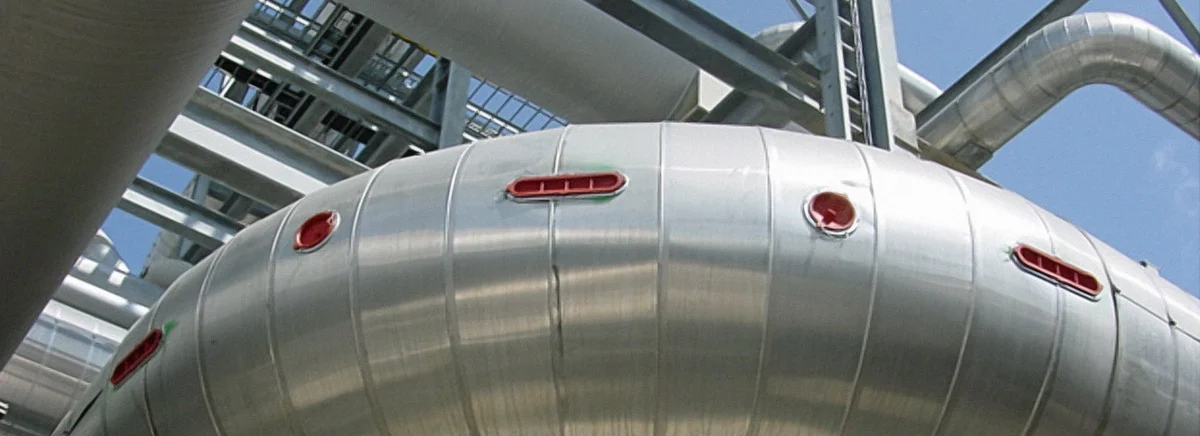Tank insulation inspection
In the realm of industrial pressure vessels and storage tanks, maintaining optimal performance is paramount. Tank insulation plays a critical role in ensuring energy efficiency, minimizing heat loss or gain, and extending the operational life of these structures. Properly inspecting tank insulation ensures that it remains effective over time, thereby reducing maintenance costs and enhancing safety standards.
The integrity of tank insulation can be significantly compromised by factors such as environmental exposure, mechanical stress, and operational wear. Regular inspections are essential to detect any deterioration or damage early on. This not only helps in preventing failures but also ensures compliance with relevant international standards like ISO 13786 for thermal insulation.
During the inspection process, it is crucial to assess the integrity of both the insulation material itself and its supporting structure. The assessment should include a visual examination, measurement of insulation thickness, and evaluation of any signs of moisture or contamination that could compromise performance. Additionally, non-destructive testing (NDT) methods such as thermography can provide valuable insights into thermal efficiency.
By understanding the importance of tank insulation inspection, stakeholders like quality managers and compliance officers can better appreciate its role in overall facility management. R&D engineers benefit from this knowledge to innovate new materials or improve existing ones. Procurement teams also find value in ensuring that the correct specifications are met when selecting insulation materials.
Scope and Methodology
| Aspect | Description |
|---|---|
| Inspection Scope | The inspection covers the entire tank insulation, including its layers and support systems. This includes checking for any signs of moisture intrusion, physical damage, or degradation due to age or use. |
| Measurement Techniques | Thermographic imaging is used to evaluate thermal performance. Ultrasonic testing can measure insulation thickness accurately without damaging the material. |
| Data Collection Methods | Field data, including ambient temperature and humidity readings, are collected alongside inspection findings. This provides a comprehensive view of environmental factors affecting insulation performance. |
The methodology employed ensures that all aspects of the tank insulation are thoroughly evaluated. Thermographic imaging provides clear visual representations of heat distribution, highlighting areas where insulation may be compromised. Ultrasonic testing offers precise measurements of insulation thickness, which is critical for determining the remaining service life and potential replacements.
Data collected during inspections is carefully documented and analyzed to identify trends or specific issues that require attention. This data-driven approach helps in making informed decisions regarding maintenance schedules and replacement needs.
Industry Applications
| Tank Type | Application Context |
|---|---|
| Above-ground storage tanks for crude oil | In the refining sector, these tanks must maintain optimal temperature to ensure efficient processing. Regular insulation inspections are crucial to prevent heat loss that could affect production efficiency. |
| Underground storage tanks for natural gas | For utility companies, maintaining proper insulation ensures the integrity of stored gases under varying environmental conditions. This helps in minimizing wastage and ensuring compliance with regulatory requirements. |
| Fuel tanks for petrochemical plants | In hazardous environments, such as refineries or chemical plants, it is vital to ensure that fuel storage tanks are well-insulated. This not only enhances safety but also contributes to reducing emissions. |
The applications of tank insulation inspections extend across various industries, each with unique challenges and requirements. For instance, in the petrochemical industry, maintaining proper insulation is essential for both operational efficiency and safety. In contrast, utility companies must focus on minimizing losses while ensuring regulatory compliance.
Regular inspections play a key role in addressing these specific needs by providing accurate data on the condition of tank insulation. This allows industries to take proactive measures to maintain optimal performance and extend the service life of their assets.
Quality and Reliability Assurance
The quality and reliability of tank insulation are critical for ensuring safe, efficient operation across various sectors. By adhering to stringent standards such as ISO 13786, laboratories can ensure that their inspections meet the highest levels of precision and accuracy.
Quality assurance in this context involves several key aspects. First is the selection of appropriate testing methods and tools tailored to each type of tank insulation material used. Second is ensuring consistent application of these methods across all inspected tanks. Third, continuous training for inspection personnel ensures that they remain up-to-date with industry best practices.
The reliability aspect focuses on long-term performance. This involves not only the initial installation quality but also ongoing monitoring through regular inspections. By implementing robust maintenance programs based on inspection results, operators can significantly extend the lifespan of their tanks and reduce operational costs.
Compliance with international standards like ISO 13786 ensures that all parties involved—manufacturers, installers, operators—are working towards common goals. This fosters a culture of excellence in tank insulation inspection, where every detail contributes to overall reliability and safety.
To achieve this level of assurance, laboratories employ advanced technologies such as thermography and ultrasonic testing. These tools provide real-time data that can be analyzed against established benchmarks. The result is not only higher quality inspections but also more reliable outcomes for all stakeholders involved in tank insulation.





